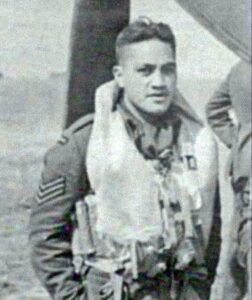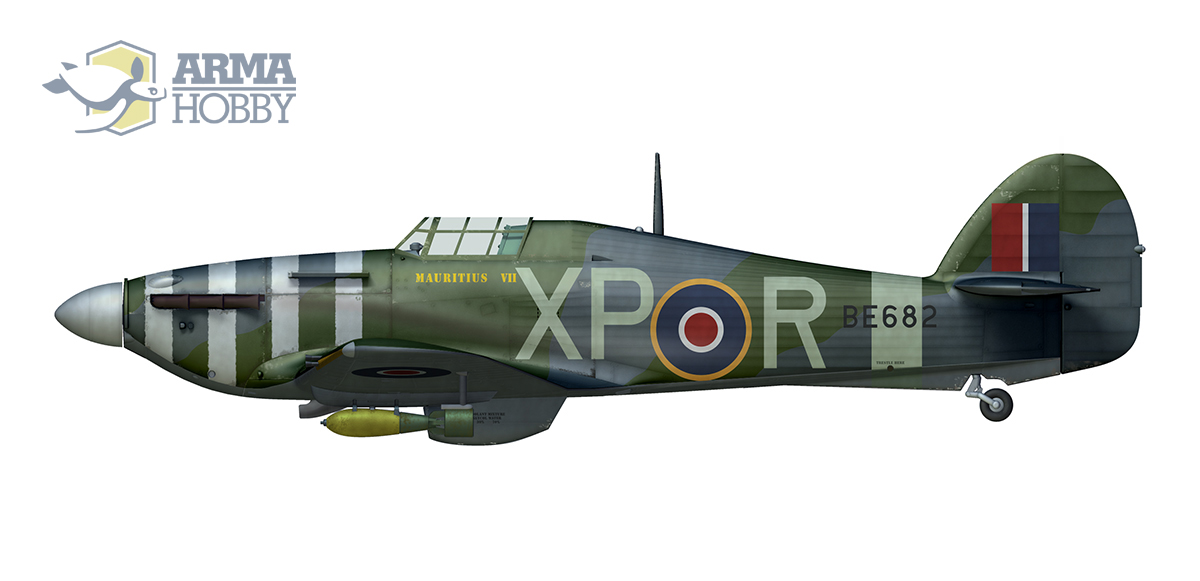Post by Dave Homewood on Jun 12, 2023 14:22:10 GMT 12
From the NEW ZEALAND HERALD, 24 July 1942:
RAIDING THRILLS
HURRICANE BOMBERS
NEW ZEALAND FLIERS
ADVENTURE OVER CALAIS
DIVE-BOMBING FIGHTERS
By Telegraph—Press Association — Copyright (Special Correspondent) (Recd 9.10 p.m.) ' LONDON, July 23
A Maori All Black in 1938, Sergeant J. H. Wetere, of Morrinsville, is now flying a Hurricane bomber. He and Sergeant W. Tye, of Wanganui, are the only New Zealanders in the squadron, which is comprised of men from Fighting France, Belgium, Canada, Australia, the Gold Coast, Ireland and England.
It is called the Mauritius Squadron, because Mauritius raised the funds for Hurricanes. Sergeant Tye said: "It is the best job of the lot. There is plenty of excitement." He has carried out five operations.
At 400 Miles An Hour
Sergeant Wetere was in two dive-bombing raids against a shell-filling factory at Marquise, near Boulogne, while Sergeant Tye was on leave.
Sergeant Wetere said: "We arrived over the target at a height of 10,000 ft., peeled off and went into a dive at an angle of 70 degrees, working up to 400 miles an hour. I released the bombs at 1000 ft. and then carried on the dive, flattening out near the ground. I began weaving violently to escape flak and machine-gun fire. I could see flak coloured red and green spurting around everywhere. I ducked down into gullies and over trees and hedges, being fired at until I reached the sea. We all hit the target. In fact, we could not miss."
Shell Burst Below Plane
Sergeants Tye and Wetere were together in a raid against a parachute silk factory at Calais. The former, describing the venture, said: "It was a beautiful, clear day. We saw the target from half-way over the Channel, flying at 12,000 ft. We came down several thousand feet when we met a terrific flak barrage. I was weaving all the time and heard a shell burst below me and as a result a lump of shrapnel went clean through the Hurricane 2ft. behind the cockpit. We did not stay long after bombing the target."
Sergeant Wetere said: " A piece of flak went through my perspex hood inches away from my head. I heard it whistle past. I also had a piece of the tail-plane blown off. It was not so good."
At Ground Level
Sergeant Tye has taken part in raids against Dunkirk, where he bombed the docks and railway sidings. Also St. Omer aerodrome, where the Germans jumped on them, but the Hurricanes evaded them, by turning sharply and as a result the enemy overshot.
Sergeant Tye said: "We flew almost along the ground, shooting up everything we could see." Sergeant Wetere bombed a factory from 200 feet at Gamaches with a Canadian.
This Hurricane bombing is dangerous and also exciting work. The bombers carry two 250-pound bombs and have 12 machine-guns. They are usually escorted by Spitfires. Sergeant Tye said: "It is a great sight to see the Spitfires stepped up over you, layer after layer. We usually use the plane's nose for sighting. It is a matter of judgment when you drop bombs and one must be careful not to overshoot the target."
Maori Pilots
Sergeant Wetere is one of the few Maori pilots in Britain, others being Pilot-Officer Kingi Tahiwi, of Wangauui, who is flying torpedo-bombers, and Sergeant P. P. J. Pohe, of Taihape, who has completed one tour of operations. There are several Maori airgunners in Britain. Sergeant Wetere played regularly for the R.N.Z.A.F. Rugby team last winter.
He is popular in the squadron, whose commanding officer said that both New Zealanders were good pilots and would do well. They met the Duke of Kent when he visited them recently. An interesting point about the Hurricane bomber is that it is an excellent dive-bomber, being faster than the German Stuka, while it is also a fighter. A squadron-leader observed: "I cannot understand why all this outcry for dive-bombers when we have got Hurricane bombers."
RAIDING THRILLS
HURRICANE BOMBERS
NEW ZEALAND FLIERS
ADVENTURE OVER CALAIS
DIVE-BOMBING FIGHTERS
By Telegraph—Press Association — Copyright (Special Correspondent) (Recd 9.10 p.m.) ' LONDON, July 23
A Maori All Black in 1938, Sergeant J. H. Wetere, of Morrinsville, is now flying a Hurricane bomber. He and Sergeant W. Tye, of Wanganui, are the only New Zealanders in the squadron, which is comprised of men from Fighting France, Belgium, Canada, Australia, the Gold Coast, Ireland and England.
It is called the Mauritius Squadron, because Mauritius raised the funds for Hurricanes. Sergeant Tye said: "It is the best job of the lot. There is plenty of excitement." He has carried out five operations.
At 400 Miles An Hour
Sergeant Wetere was in two dive-bombing raids against a shell-filling factory at Marquise, near Boulogne, while Sergeant Tye was on leave.
Sergeant Wetere said: "We arrived over the target at a height of 10,000 ft., peeled off and went into a dive at an angle of 70 degrees, working up to 400 miles an hour. I released the bombs at 1000 ft. and then carried on the dive, flattening out near the ground. I began weaving violently to escape flak and machine-gun fire. I could see flak coloured red and green spurting around everywhere. I ducked down into gullies and over trees and hedges, being fired at until I reached the sea. We all hit the target. In fact, we could not miss."
Shell Burst Below Plane
Sergeants Tye and Wetere were together in a raid against a parachute silk factory at Calais. The former, describing the venture, said: "It was a beautiful, clear day. We saw the target from half-way over the Channel, flying at 12,000 ft. We came down several thousand feet when we met a terrific flak barrage. I was weaving all the time and heard a shell burst below me and as a result a lump of shrapnel went clean through the Hurricane 2ft. behind the cockpit. We did not stay long after bombing the target."
Sergeant Wetere said: " A piece of flak went through my perspex hood inches away from my head. I heard it whistle past. I also had a piece of the tail-plane blown off. It was not so good."
At Ground Level
Sergeant Tye has taken part in raids against Dunkirk, where he bombed the docks and railway sidings. Also St. Omer aerodrome, where the Germans jumped on them, but the Hurricanes evaded them, by turning sharply and as a result the enemy overshot.
Sergeant Tye said: "We flew almost along the ground, shooting up everything we could see." Sergeant Wetere bombed a factory from 200 feet at Gamaches with a Canadian.
This Hurricane bombing is dangerous and also exciting work. The bombers carry two 250-pound bombs and have 12 machine-guns. They are usually escorted by Spitfires. Sergeant Tye said: "It is a great sight to see the Spitfires stepped up over you, layer after layer. We usually use the plane's nose for sighting. It is a matter of judgment when you drop bombs and one must be careful not to overshoot the target."
Maori Pilots
Sergeant Wetere is one of the few Maori pilots in Britain, others being Pilot-Officer Kingi Tahiwi, of Wangauui, who is flying torpedo-bombers, and Sergeant P. P. J. Pohe, of Taihape, who has completed one tour of operations. There are several Maori airgunners in Britain. Sergeant Wetere played regularly for the R.N.Z.A.F. Rugby team last winter.
He is popular in the squadron, whose commanding officer said that both New Zealanders were good pilots and would do well. They met the Duke of Kent when he visited them recently. An interesting point about the Hurricane bomber is that it is an excellent dive-bomber, being faster than the German Stuka, while it is also a fighter. A squadron-leader observed: "I cannot understand why all this outcry for dive-bombers when we have got Hurricane bombers."







